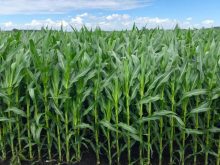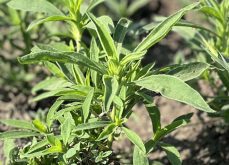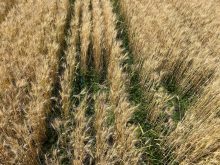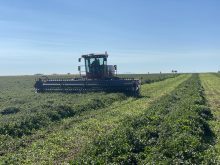Any Prairie farmers who ignored a 2005 paper on managing herbicide-resistant wild oats, back when it first dropped, might feel like they’re getting an “I told you so” finger wag if they were to read it today.
Authored by Hugh Beckie, a former AAFC researcher known for his contributions to weed management and herbicide resistance (HR), the study examined the management of HR wild oat patches by preventing seed shed.
The data, collected between 1997 and 2002, revealed wild oat patches left unchecked expanded by 330 per cent — but patches where panicles were removed to prevent seed shed increased by only 35 per cent. So it was clear preventing seed shed was an effective way to reduce patch growth.
Read Also
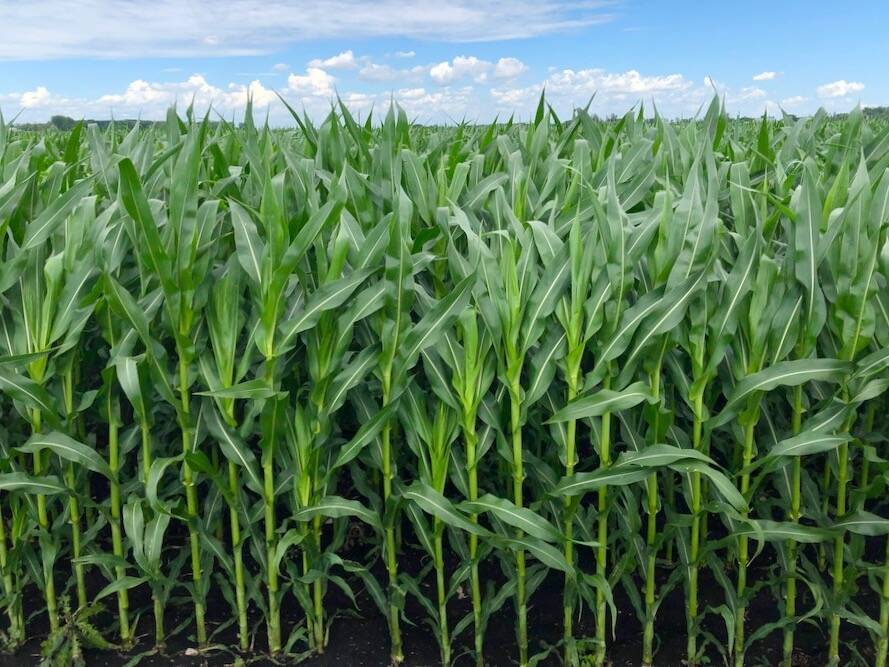
Cancer agency reclassifies another herbicide ‘probably carcinogenic’
The WHO’s cancer research agency has now put atrazine, a herbicide well known to corn growers, in the same potential-hazard category where the agency put glyphosate.
“There was interest in it, but I don’t think there was a true acceptance of just how hard wild oat could be to manage as resistance continued to develop,” AAFC research scientist Breanne Tidemann says today.
When the paper was released, herbicide resistance in wild oats had already been appearing more frequently in weed surveys. In 2003, 15 per cent of wild oats had Group 1 resistance; eight per cent had Group-2 resistance.
“There was a little bit of ‘I can still control mine just fine’ type of denial,” says Tidemann, who added there was also resistance to the idea of hand pulling. “In reality, it would have probably been very beneficial had everyone started doing that when they had patches.”
HR wild oats have since become a massive problem for cereal growers in Western Canada.
In the latest survey, collecting data between 2012 and 2017, 69 per cent of wild oats on the Prairies display some level of herbicide resistance. Of those, 62 per cent are resistant to Group 1 herbicides, 34 per cent to Group 2 and 27 per cent to both. Those numbers have almost certainly risen since those surveys were taken.
Harvest weed seed control
Tidemann is one of the researchers who have taken up the mantle for HR wild oats since Beckie, now retired, left AAFC. She noted Beckie’s paper was the first to suggest something needed to be done differently with wild oats. And while it didn’t catch on at the time, it focused on an idea that has become familiar these days: a need to manage the seeds in the seed bank.
Harvest weed seed control (HWSC) wasn’t a term that was used in 2005, but that’s essentially what Beckie’s paper was suggesting.
The current version of HWSC has its roots in Australia in the early 2010s. Farmers were struggling with HR ryegrass as a weed, and producers started looking for different ways to manage it, Tidemann says. So where weed control had failed during the growing season, they began to look for ways to stop those likely herbicide-resistant seeds from going into the seed bank.
Some of the techniques the Australians were using included chaff carts, where chaff is collected, taken off the field and either fed to animals or burned. They were also doing things like dropping the straw and the chaff into a narrow swath behind the combine and then burning it to destroy weed seeds.
Impact mills
One of the most significant innovations of that period was the development of weed seed destructors, or impact mills, which greatly improved weed seed management. The Harrington Seed Destructor was the first such device. Tidemann said there are now several brands available on the market, in the $100,000 range.
“The idea is that the chaff goes into these mills on the back of the combine, and the weed seeds that are in the chaff get destroyed going through it,” she says.
Impact mills are effective at ensuring the weed seeds collected are eliminated from the seed bank. Tidemann notes the mills effectively destroy almost any weed seed they’ve tested it with, including wild oat. But the problem for wild oats is getting the seed into the mill, because they tend to drop their seeds before harvest.
But while impact mills might be better suited for other weeds, Tidemann points out the machines can still play a role in controlling wild oats. The theory is that the seeds that fall early will fall beside the mother plant — and what is making those patches grow is seeders dragging the seeds in the soil and combines broadcasting seed out the back with chaff spreaders.
“If we’re spreading those seeds 200 metres down the field each pass, in a couple of years, instead of it being a patch, your entire field has a herbicide-resistant wild oat issue,” Tidemann says.
If that spread can be avoided, the patch itself can be targeted with additional herbicides, or by cutting or mowing, or whatever method best suits that particular farm.
“At least then it’s only a patch instead of your whole field,” Tidemann stresses.
In collaboration with AAFC Saskatoon research scientist Shaun Sharpe, Tidemann is putting that theory to the test in a study examining how effective impact mills are at stopping the spread of wild oat patches.
They’re working with a producer in Saskatchewan who owns an impact mill and is battling wild oats on his property. They marked out six wild oat patches in his field and have split the patches so that some of them get harvested with the impact mill on and the others with it off. The hypothesis is that the patches that have been harvested with the mill will remain smaller than the patches harvested conventionally.
“The farmer does all of their regular wild oat management, the herbicides they’d apply, whatever else they would typically do,” Tidemann explains. “We just are looking at the difference between mill-on and mill-off on patch growth.”
She is only two years into the four-year study, and while it’s too soon to draw any solid conclusions, the early results look promising.
“Even after the first year, there was a tendency for the patches that were harvested without a mill to have gotten quite a bit bigger,” Tidemann notes. “It was dependent on the patch and on what crop it went into the next year. But it was quite variable, and it’s still pretty early.”
Practical suggestions
Even if the study confirms the expected results, impact mills remain costly and are financially feasible for controlling wild oats only if farmers also face other weed challenges. An easy answer to how one prevents those seeds from entering the seed bank remains elusive, at least on a large scale.
But if the problem is still at the patch level, Tidemann recommends going back to the basics. That could even mean revisiting Beckie’s hands-on method.
If the wild oat problem is not widespread and limited to a small patch known to have herbicide resistance, Tidemann said it’s probably worth it to cut the panicles or pull the plants — whichever is easier — to prevent seed production and input into the seedbank.
“I think that’s something that gets missed sometimes because no one wants to be hand-pulling,” she says.
While she fully understands the reluctance toward manual removal, she emphasizes those weeds, which survived everything else that was done all season, are the ones that are going to cause the most problems in the future.
“They’re the ones that your herbicide didn’t kill. Those are the healthiest, most competitive wild oats in that field,” she explains. “So if it’s a small patch or a small number, pull them out and burn them.”
But if the problem is more widespread, Tidemann says, it’s time to assess the return on investment on a crop in that area.
“Maybe we need to mow that area. Maybe we need to silage that area. Maybe we need to look at something else to manage the seed production in that area,” she advises. “We’ve got more research to figure out what we can do, but mowing, silaging, and using harvest weed seed control are things that producers could do right now that are available right now to help manage wild oat seed production.”
Some recent research may show promise in the battle against HR wild oats. Tidemann points to work Steve Shirtliffe from the University of Saskatchewan has done on inter-row tillage and inter-row mowing. The idea is that the tillage uproots weeds between crop rows, and the mowing helps prevent weeds from producing seeds. The research hasn’t been tested on wild oats, but Tidemann says she sees some potential for it.
“But again, it’s an equipment purchase; it’s multiple passes across the field. It takes more work,” she says. “Unfortunately, I don’t think we’re going to find a solution for resistant wild oat that isn’t going to take time, money, and effort in addition to what we’re already doing. If we want to be in a different situation, we’re going to have to do something different.”




